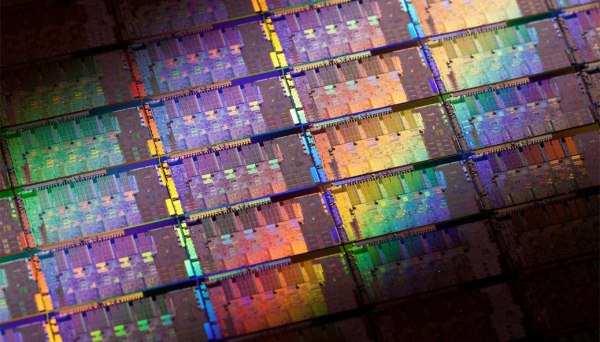And the Sandy Bridge into the market even though the serious problems identified - on which we will talk soon - Intel Ivy Bridge will evolve. After Sandy Bridge will Ivy Bridge. In principle, are expected to face in late 2011 or early 2012, with the advantage of opening the manufacturing process at 22 nm.
We will move from the current 32 to the new 22-nanometer, which as always will bring improved performance, power consumption and of course more efficient operating temperatures. How much better? Some sources claim that to be around 20% more performance compared to the current platform, Sandy Bridge, recently presented more than a month.
Please remember that Ivy Bridge will be a new architecture, a development much more complete than they have of course the Sandy Bridge. Technical data have not yet been announced, but is expected to keep the CPU + GPU combo, with the latter compatible with DirectX 11 and offer native compatibility (now I) with USB 3.0.
To be more precise details still have to wait a few months to see if Intel is pronounced. Ivy Bridge will be, if anyone avoids the first 22-nanometer architecture in the market. Before she is expected to reach an evolution of high performance Sandy Bridge, which will be the heirs of Core i7-900 (Intel X58 chipset and socket 1366) but under the Sandy Bridge microarchitecture.
Have high prices (from 250-300 euros the processor core) and also bring a new chipset that will ensure the operation of two PCI-Express x16 simultaneously, and not x8 as P67 and company, and - perhaps - Triple Channel DDR3. A fun year for Intel, of course, in which AMD does not stand idly by: Bulldozer with 8 cores and a performance close to the Core i7, we'll see how far.
Image | Coolcaesar to Wikipedia. Track | TechSpot. 


We will move from the current 32 to the new 22-nanometer, which as always will bring improved performance, power consumption and of course more efficient operating temperatures. How much better? Some sources claim that to be around 20% more performance compared to the current platform, Sandy Bridge, recently presented more than a month.
Please remember that Ivy Bridge will be a new architecture, a development much more complete than they have of course the Sandy Bridge. Technical data have not yet been announced, but is expected to keep the CPU + GPU combo, with the latter compatible with DirectX 11 and offer native compatibility (now I) with USB 3.0.
To be more precise details still have to wait a few months to see if Intel is pronounced. Ivy Bridge will be, if anyone avoids the first 22-nanometer architecture in the market. Before she is expected to reach an evolution of high performance Sandy Bridge, which will be the heirs of Core i7-900 (Intel X58 chipset and socket 1366) but under the Sandy Bridge microarchitecture.
Have high prices (from 250-300 euros the processor core) and also bring a new chipset that will ensure the operation of two PCI-Express x16 simultaneously, and not x8 as P67 and company, and - perhaps - Triple Channel DDR3. A fun year for Intel, of course, in which AMD does not stand idly by: Bulldozer with 8 cores and a performance close to the Core i7, we'll see how far.
Image | Coolcaesar to Wikipedia. Track | TechSpot.



No comments:
Post a Comment